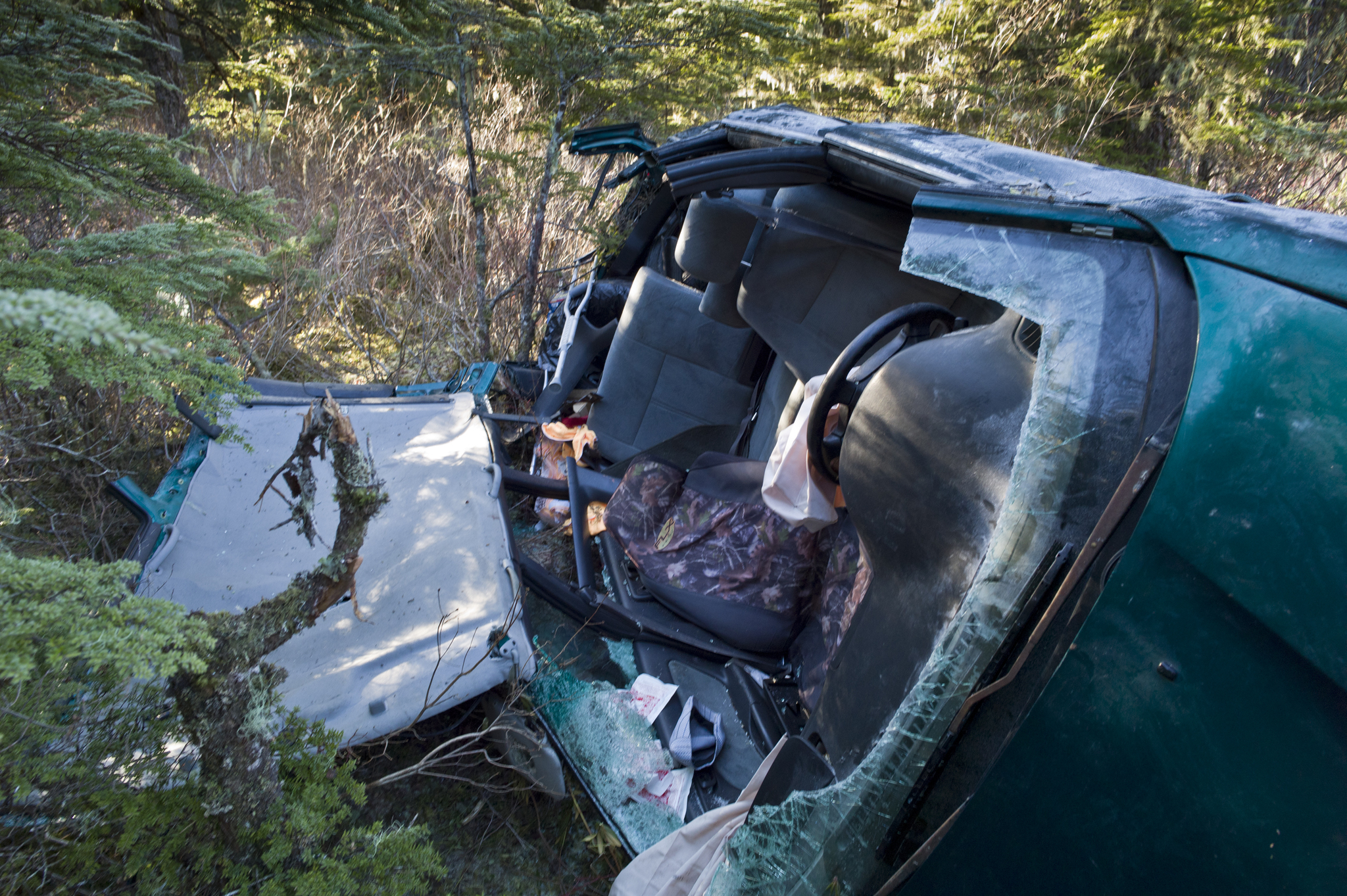Lance McVay survived a horrific crash earlier this month after he passed out at the wheel and launched his car into the woods at the end of the road in North Douglas. Then he survived a long cold night trapped in his mangled vehicle before some hikers heard his cries for help.
McVay, 48, now has a long, protracted road to regain his health after multiple fractures and extensive surgery.
McVay was in the habit of driving out to the end of the road on Douglas Island to photograph the aurora borealis after his late-night volunteer radio show on KRNN, explained his wife, April Carpenter-McVay.
McVay, who is diabetic, had been not taking his insulin regularly and had not eaten that night, leading to a blackout while he was driving.
“I don’t remember before the crash, really,” McVay said Friday from the Seattle medical facility where he is recuperating. “I remember leaving the station, I remember driving across the bridge. The next thing I know, I’m waking up, and the car is on its side, I’ve obviously been in a wreck. I didn’t really know where I was along the road.”
McVay’s car had hit the embankment at the parking lot and cartwheeled down a steep ravine, coming to a stop about 150 feet into the forest.
”Car parts were left in 20-30 feet up in the trees along the way,” Carpenter-McVay wrote in an update she sent to friends and family that she later posted on a GoFundMe page to help pay for Lance’s medical expenses. “Lance’s hat was even up in a tree. His eyeglasses, watch and one shoe have still not been found.”
McVay regained consciousness at about 3 a.m. and tried to call for help.
”He tried to get out of the car but he was too badly trapped,” Carpenter-McVay added. “He had serious injuries, the most life-threatening one of which that his hip ball joint had come out of its socket then smashed back in and went up into his lower abdomen. … He was in the middle of nowhere and it was 19 degrees.”
McVay said the excruciating pain in his hip prevented him from freeing himself.
“I knew I was hurt pretty bad, I couldn’t move my right leg at all,” he said. “I was able to kick out the windshield with my other leg — I had put a hole in it with my head during the wreck. I thought I could crawl out, but I couldn’t manage it because of the pain.”
McVay was able to pull himself up to look out the window, he said.
“It never really occurred to me I wouldn’t get found,” he said. “I knew April and my son would be looking for me.”
Meanwhile, Carpenter-McVay had indeed been trying to reach her husband, calling him repeatedly between midnight and 5 a.m. Eventually she woke his youngest son up. The two drove around the area, but did not spot his car. At about 7:30 a.m. they called the U.S. Forest Service, the State Troopers and Juneau Police Department.
McVay said he knew he wasn’t that far off the road, and tried calling out to passing cars.
Finally, at about 8:30 a.m., he heard some hikers pull up and get out of their vehicle.
“I heard their voices and I started yelling,” McVay said, “They immediately responded.”
“Then I knew I was gong to be alright,” he added.
McVay’s injuries include a broken rib, a broken wrist, a broken nose and cheekbone, as well as two fractured vertebra. The most serious injury is the shattered femur, which required reconstruction and an expensive trip to the trauma unit at Seattle’s Harborview Medical Clinic.
Not quite three weeks later, McVay is in a long-term medical facility in Seattle and will be there at least three weeks, April said.
“They really haven’t given me a timeline” for going home, McVay said. “It has gotten a lot better.”
Friday, for example, McVay was able to walk 145 feet with a “platform walker,” a major accomplishment.
“I’m still pretty banged up,” he said ruefully.
Trying to cope from anther state is pretty overwhelming, Carpenter-McVay said, adding, “I just have to take it day by day.”
Both expressed enormous gratitude to everyone who stepped forward to help, from the hikers who found McVay to the fire and rescue personnel to those who donated funds and even airplane miles so that McVay’s younger son could go see him.
“Hopefully this nightmare and the things we’ve learned from it will help others to understand: you can NOT mess around wit health issues,” Carpenter-McVay said.
“I’m just still so grateful he’s alive,” she added. “I’m still stunned by everything, I can’t believe those women found him, I can’t believe he stayed alive.”
Contact reporter Liz Kellar at 523-2246 or liz.kellar@juneauempire.com.

